Country
Crash of a Boeing B-52H-155-BW Stratofortress at Andersen AFB
Date & Time:
May 19, 2016 at 0830 LT
Registration:
60-0047
Survivors:
Yes
Schedule:
Andersen - Andersen
MSN:
474412
YOM:
1960
Crew on board:
7
Crew fatalities:
Pax on board:
0
Pax fatalities:
Other fatalities:
Total fatalities:
0
Captain / Total hours on type:
387.00
Copilot / Total hours on type:
195
Circumstances:
On 19 May 2016, at 0832 hours local time (L), a B-52H, tail number 60-0047 [Mishap Aircraft (MA)], assigned to the 69th Expeditionary Bomb Squadron, 5th Bomb Wing, Andersen Air Force Base, Guam, departed the prepared-surface overrun of Runway 06 Left (RWY 06L) during a highspeed, heavy-weight, aborted takeoff. The Mishap Crew (MC), which consisted of the Mishap Pilot (MP), Mishap Co-Pilot (MCP), Mishap Radar Navigator (MRN), Mishap Navigator (MN), Mishap Electronic Warfare Officer (MEW), an augment pilot occupying the Mishap Gunner (MG) station, and an Instructor Weapon System Officer occupying the Mishap Instructor Pilot (MIP) jump seat, were conducting a Higher Headquarters Directed mission. The MC were treated for minor injuries consistent with a ground egress. The MA sustained total damage with a loss valued at $112M. There was no damage to private property. The MC were cleared for takeoff at 0831L. The MA accelerated within performance standards verified by takeoff and landing data calculated performance for S1 timing and S1 decision speed. Approximately three to five seconds after reaching the S1 speed of 111 knots, the MP, MCP, and MN observed birds in front of the MA at wing level. Shortly thereafter, the MP and MCP observed engine indications for numbers 5, 6, and 7 “quickly spooling back” from the required takeoff setting. The MP also observed high oil pressure indications on the number 8 engine and a noticeable left-to-right yawing motion. Accelerating through approximately 142 knots, the MP simultaneously announced and initiated aborted takeoff emergency procedures. With the throttles set to idle thrust and airbrakes set to six, the MP initiated continuous braking pressure. The MCP deployed the drag chute at 135 knots. The drag chute failed to inflate properly. At 2,500 feet runway remaining, the MP shut off the outboard engines (numbers 1/2 and 7/8). Shortly thereafter, the MP announced the MA and MC were going to depart the prepared surface. The MEW jettisoned the defensive compartment, starboard-side hatch and the MP shut off the inboard engines (numbers 3/4 and 5/6). The MA departed the prepared surface shearing the main landing gear. The MA finally came to a rest slightly canted from runway centerline, right wing down approximately 300 feet from the runway, and subsequently caught on fire. The MC performed emergency aircraft shutdown procedures and safely egressed the MA through the MEW hatch.
Probable cause:
The Accident Investigation Board (AIB) President found by a preponderance of the evidence the cause of the mishap was the MP analyzed visual bird activity and perceived cockpit indications as a loss of symmetric engine thrust required to safely attain flight and subsequently applied abort procedures after S1 timing. The AIB President also found by a preponderance of the evidence the following factors substantially contributed to the mishap: drag chute failure on deployment and exceeding brake-energy limits resulting in brake failure.
Final Report:
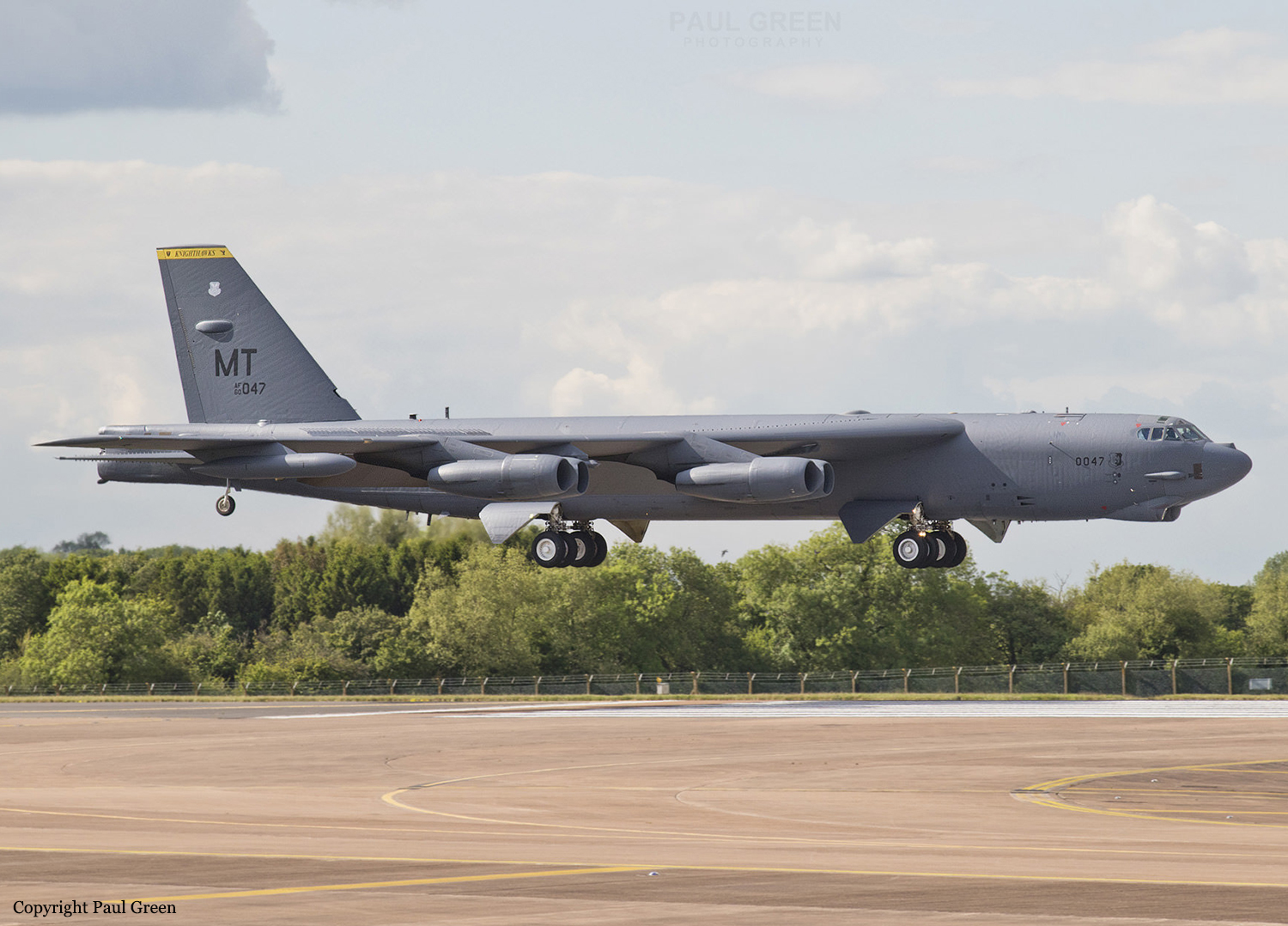
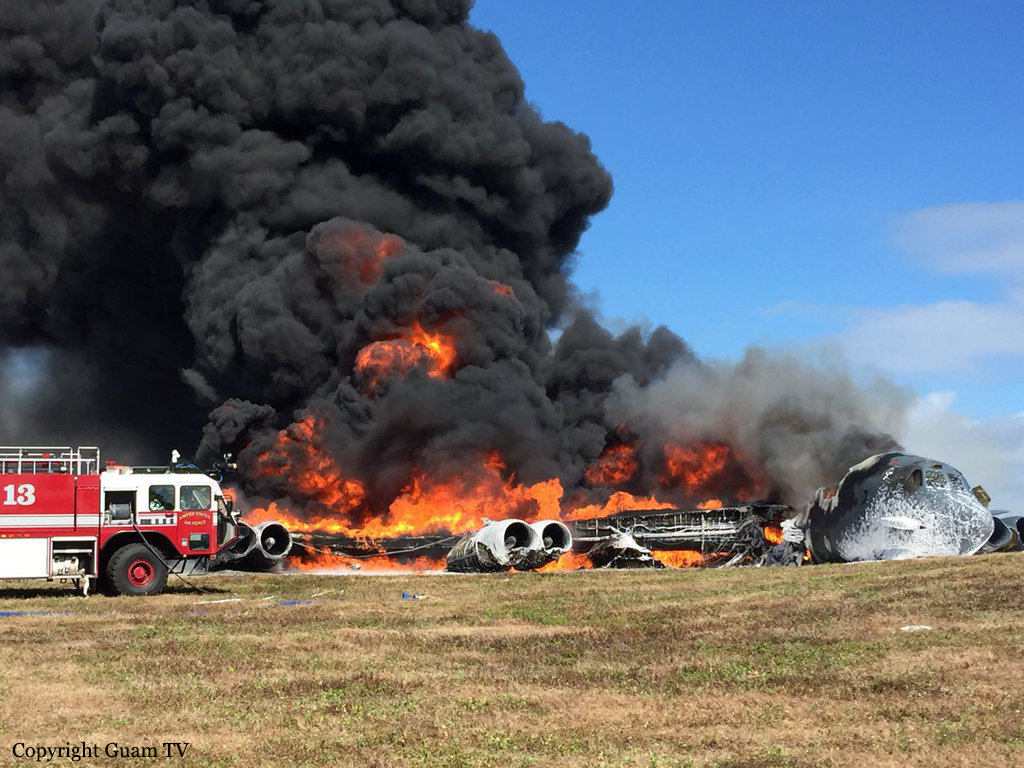
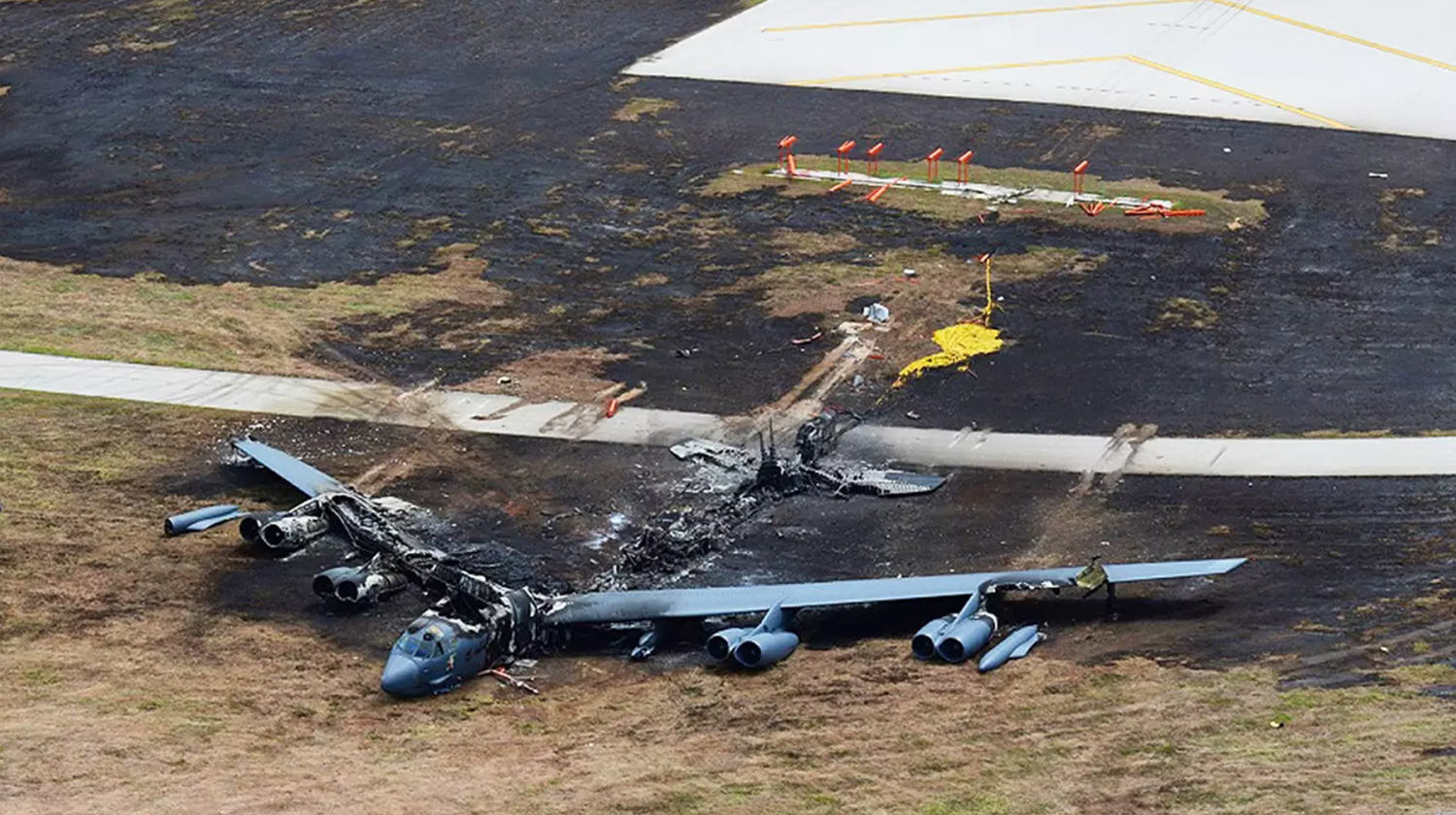
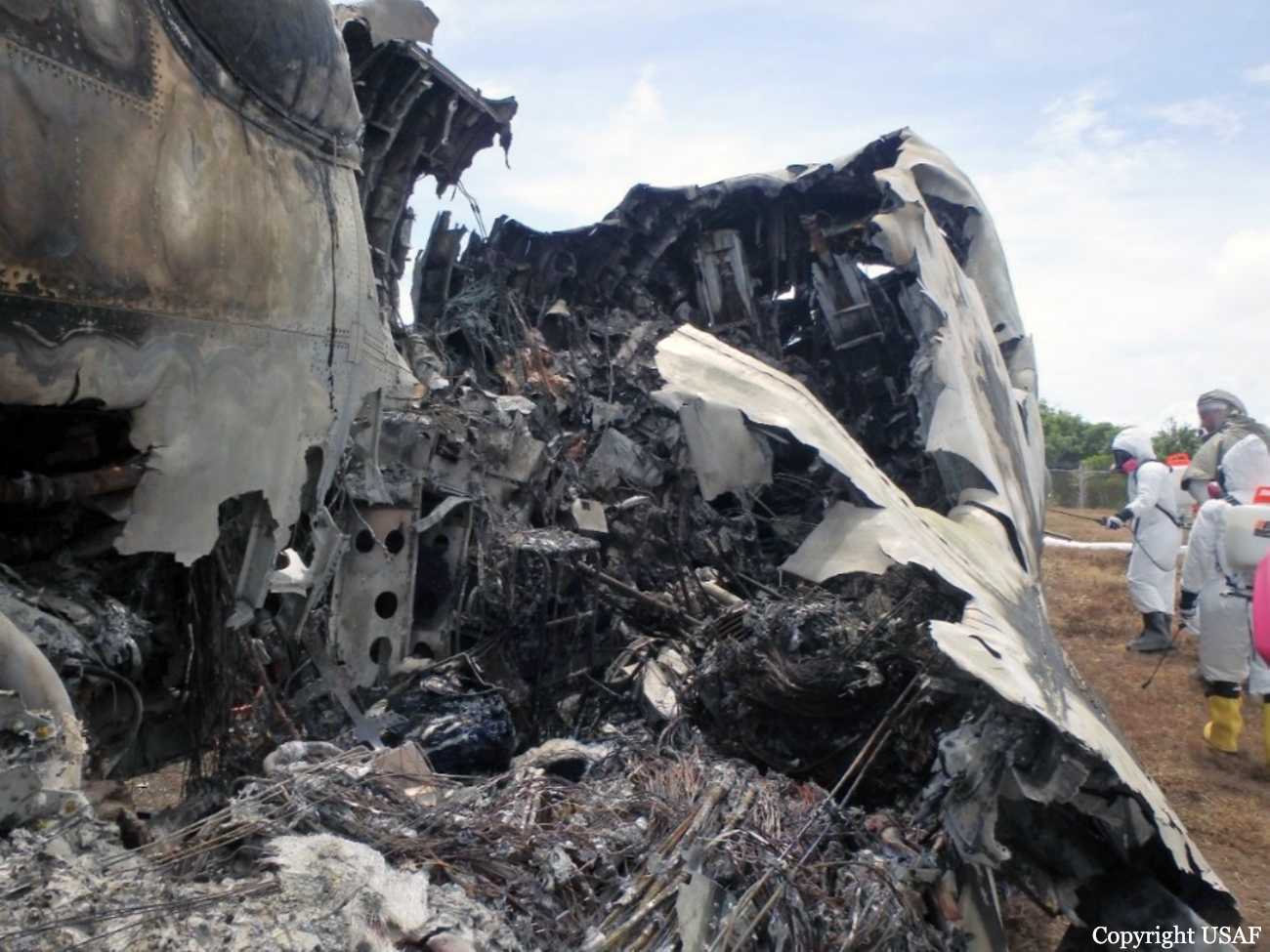
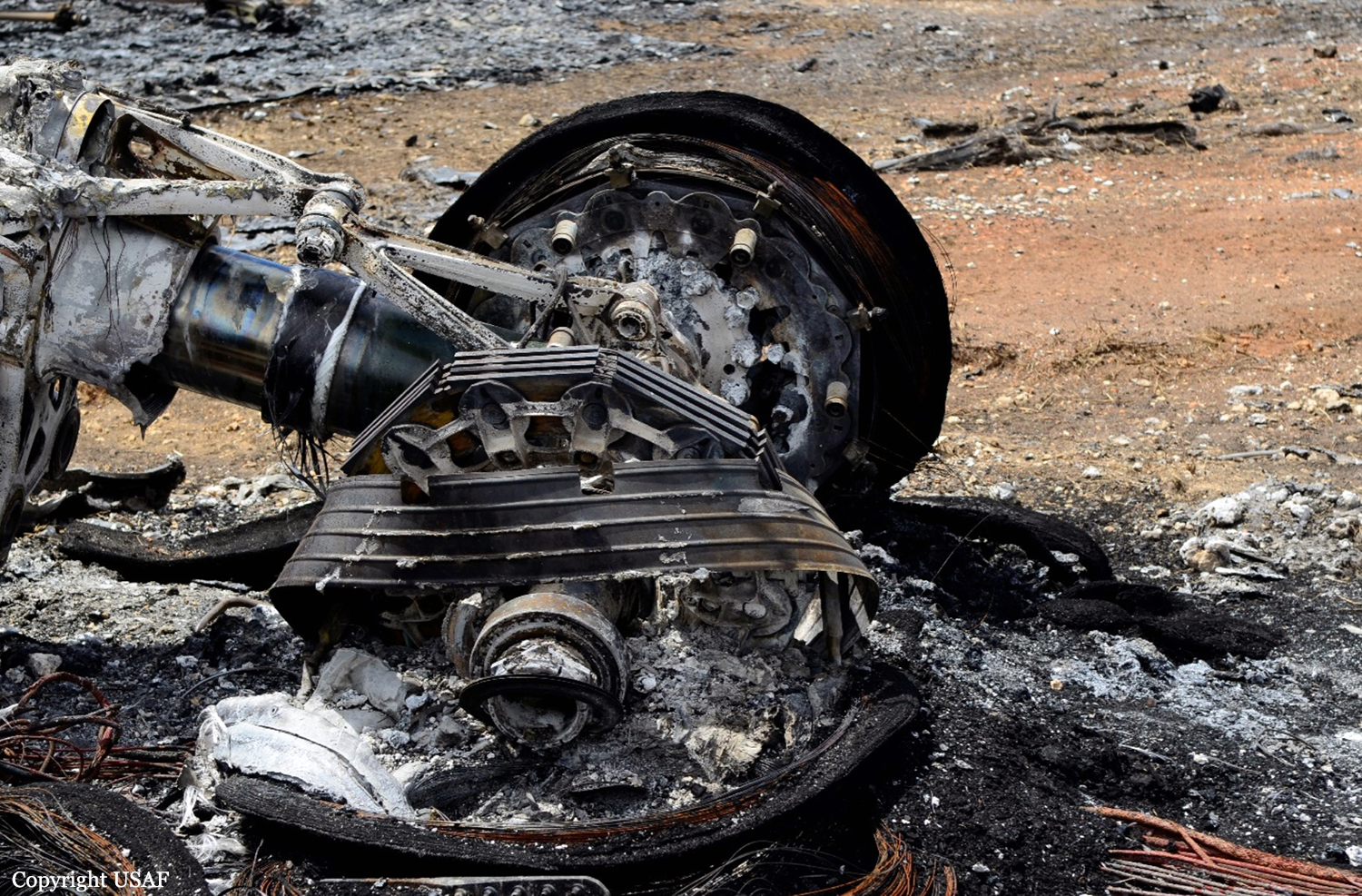
Crash of a Boeing B-52H-155-BW Stratofortress off Guam Island: 6 killed
Date & Time:
Jul 21, 2008 at 0945 LT
Registration:
60-0053
Survivors:
No
Schedule:
Andersen AFB - Andersen AFB
MSN:
464418
YOM:
1960
Flight number:
Raider 21
Crew on board:
6
Crew fatalities:
Pax on board:
0
Pax fatalities:
Other fatalities:
Total fatalities:
6
Circumstances:
The aircraft departed Andersen AFB on a flight around the Guam Island under call sign 'Raider 21' with 6 crew members on board, taking part to the Guam Liberation Day celebrations. About 15 minutes into the flight, while descending from 14,000 to 1,000 feet, the aircraft became uncontrollable and crashed in the sea about 50 km north of Guam Island. The aircraft disintegrated on impact and only few debris were found. All six crew members were killed.
Crew:
Maj Chris Cooper, pilot,
Cpt Michael Dodson, copilot,
1st Lt Robert Gerren, electronic warfare officer,
1st Lt Joshua Shepherd, navigator,
Maj Brent Williams, radar navigator,
Col George Martin, flight surgeon.
Crew:
Maj Chris Cooper, pilot,
Cpt Michael Dodson, copilot,
1st Lt Robert Gerren, electronic warfare officer,
1st Lt Joshua Shepherd, navigator,
Maj Brent Williams, radar navigator,
Col George Martin, flight surgeon.
Probable cause:
Malfunctioning parts and late recognition of spiraling problems likely led to the fatal crash of a B-52H Stratofortress in July, an Air Force accident investigation board concluded in a report issued Feb. 13. The problem parts, investigators decided, were the bomber’s rear stabilizers — the large horizontal fins at the jet’s tail that help angle the B-52H up or down. Although the inquiry could not determine what led to the stabilizer problem, the board said it believed the stabilizers malfunctioned while the bomber was in a fast descent from 14,000 feet to 1,000 feet. “Even an experienced aircrew could have found it difficult to recognize, assess and recover from the very rapidly developing situation involving the rear stabilizer trim,” board president Brig. Gen. Mark Barrett concluded. The bomber did not carry a flight data recorder, so the investigation team pieced together events leading up to the crash from air traffic control radar information and from parts recovered from the ocean floor by remote-controlled Navy submarines. One recovered part was a component called a jackscrew that helps control the stabilizers. The jackscrew revealed the stabilizer trim was set at 4.5 to 5 degrees nose down, but parts that could have helped determine why the stabilizers were pointed down were not recovered. Based on flight simulations, the investigative team determined the flight was normal until the jet turned left and began to descend about 33 miles west of Guam. As the 48-year-old bomber dove toward the Pacific at a speed of more than 240 mph, the stabilizers suddenly unhinged, putting the jet into a dive with the nose pointed down 30 degrees and more. One of the pilots likely tried to level the stabilizers manually using a control wheel in the cockpit that moves the stabilizer 1 degree every two to three seconds, the report said. However, because the plane was already low, there wasn’t enough time to level the stabilizers. At least three crew members tried to bail out seconds before the plane hit the water, but the plane’s speed, altitude and angle already were past the point where they could survive the ejection.
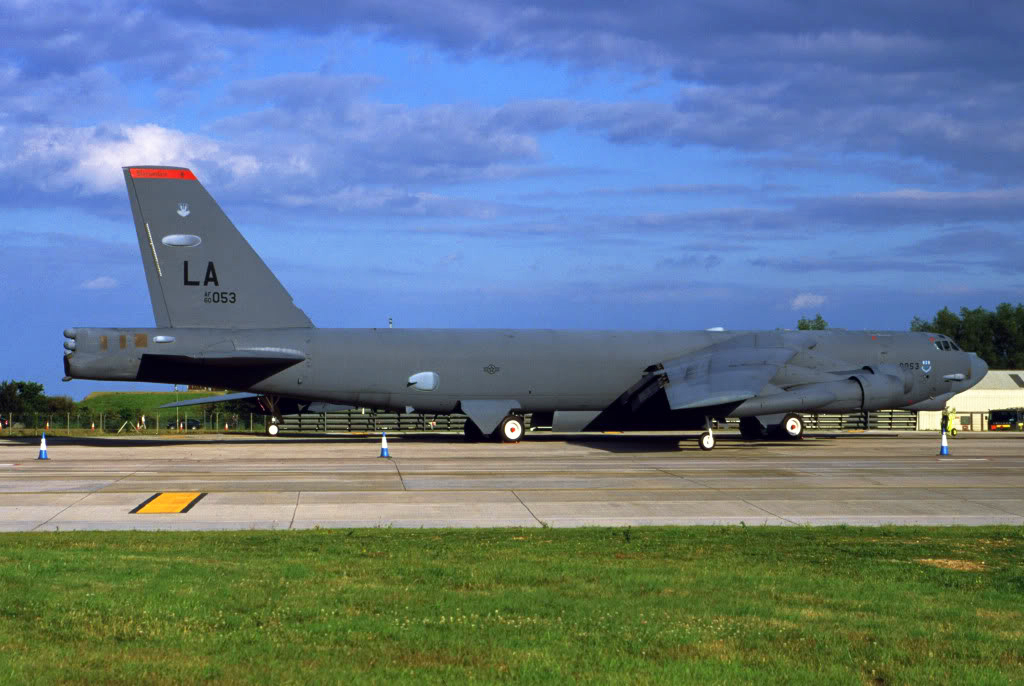
Crash of a Boeing B-52H Stratofortress at Fairchild AFB: 4 killed
Date & Time:
Jun 24, 1994 at 1416 LT
Registration:
61-0026
Survivors:
No
Schedule:
Fairchild AFB - Fairchild AFB
MSN:
464453
YOM:
1960
Flight number:
Czar 52
Crew on board:
4
Crew fatalities:
Pax on board:
0
Pax fatalities:
Other fatalities:
Total fatalities:
4
Circumstances:
In preparation for the 1994 Fairchild Airshow, the Pilot Lt Col Arthur A. "Bud" Holland was again selected as the command pilot for the B-52 demonstration flight. On 15 June 1994, Holland briefed the new wing commander, Colonel William Brooks, on the proposed flight plan. Holland's demonstration profile violated numerous regulations, including steep bank angles, low-altitude passes, and steep pitch attitudes. Brooks ordered Holland not to exceed 45° bank angle or 25° pitch attitude during the demonstration. During the first practice session, on 17 June, Holland repeatedly violated these orders. Brooks witnessed this, but took no action. Pellerin flew with Holland on that flight and reported to Brooks that, "the profile looks good to him; looks very safe, well within parameters." The next practice flight on 24 June ended with the fatal crash. The demonstration profile designed by Holland included a 360° turn around Fairchild's control tower, a maneuver which he had not attempted in previous air show demonstrations. During the final flight, Holland performed a series of 60° bank turns and a 68° pitch climb in violation of Brooks' orders. There is no evidence to suggest that either McGeehan or Wolff attempted to intervene as Holland carried out these dangerous maneuvers. Pellerin was originally scheduled to fly in this mission, as he had done on the 17 June flight, but he was unavailable for the 24 June flight and Wolff was selected as the replacement aircrew member. Due to the short notice of his assignment to the mission, Wolff did not participate in the pre-flight briefing and boarded the aircraft after the engines were started. He was therefore unaware of the planned mission profile and had no opportunity to raise any objections before take-off. All of the four aircrew involved in the crash had only limited flying time in the months before the crash. It would appear that none of them had noticed that the aircraft had stalled until shortly before impact, as indicated by a failure to apply standard recovery techniques to the aircraft once it entered the stall. The investigation reported that even if the proper stall recovery techniques had been applied, it was unlikely that the accident could have been prevented as the aircraft was already flying too low to be recovered.
Crew:
Lt Col Arthur A. "Bud" Holland, pilot,
Lt Col Mark C. McGeehan, copilot,
Col Robert E. Wolff, observer,
Lt Col Kenneth "Ken" Huston, operations officer.
Crew:
Lt Col Arthur A. "Bud" Holland, pilot,
Lt Col Mark C. McGeehan, copilot,
Col Robert E. Wolff, observer,
Lt Col Kenneth "Ken" Huston, operations officer.
Probable cause:
The accident investigation concluded that the crash was primarily attributable to Holland's personality and behavior, USAF leaders' inadequate reactions to the previous incidents involving Holland, and the sequence of events and aircrew response during the final flight of the aircraft. Holland's disregard for procedures governing the safe operation of the B-52 aircraft that he commanded and the absence of firm and consistent corrective action by his superior officers allowed Holland to believe that he could conduct his flight in an unsafe manner, culminating with the slow, steeply banked, 360° turn around the control tower. The other environmental factors involved, including the addition of a new maneuver (the 360° turn around the tower), inadequate pre-flight involvement of Wolff, and the distractions from the base shooting four days prior, combined with Holland's unsafe and risk-taking piloting behavior to produce conditions favorable for the crash to occur. The final factor, according to the USAF investigation report, was the 10-knot (19 km/h) wind and its effect on the maneuvers required to achieve the intended flightpath in relation to the ground.
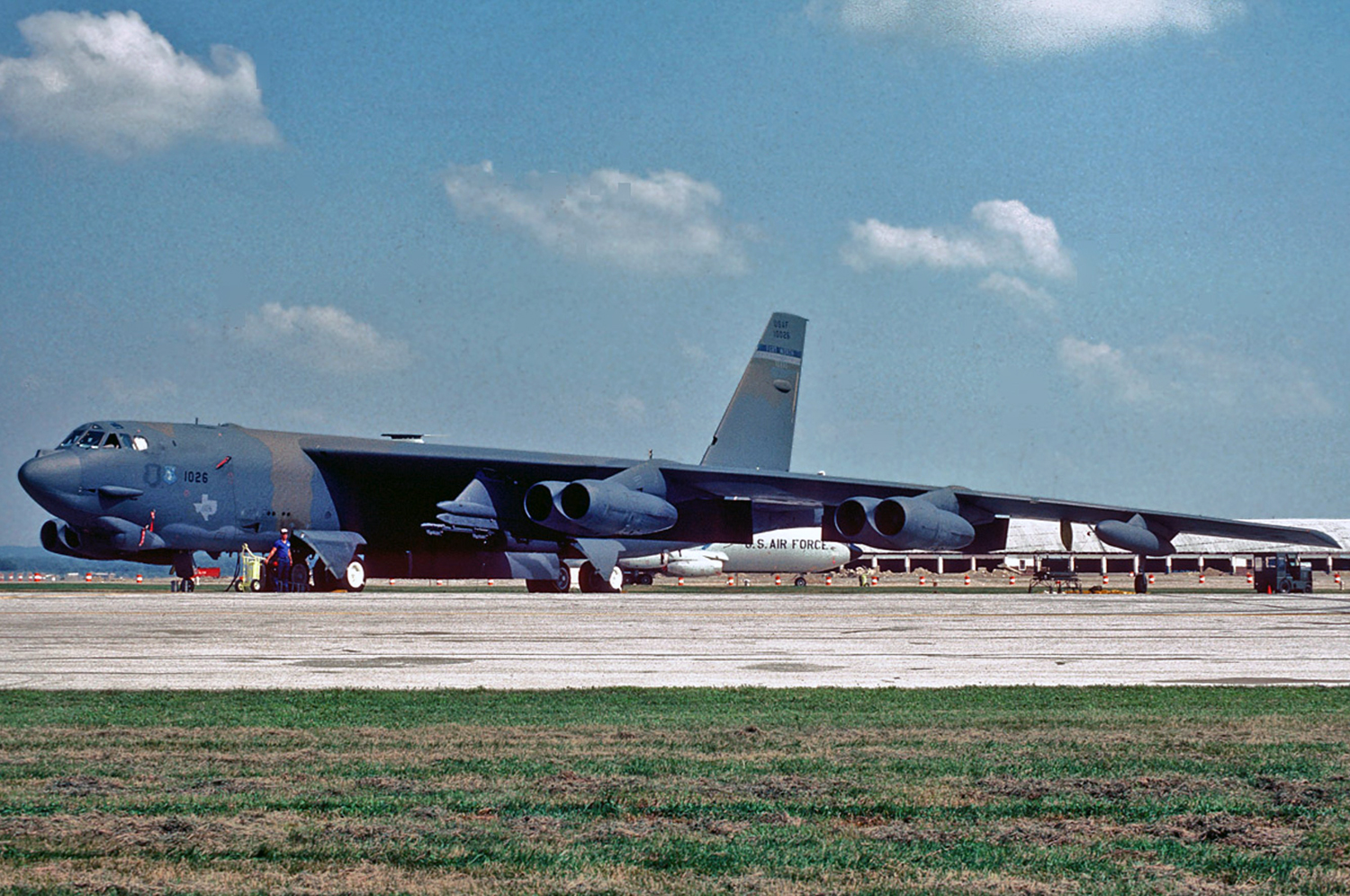
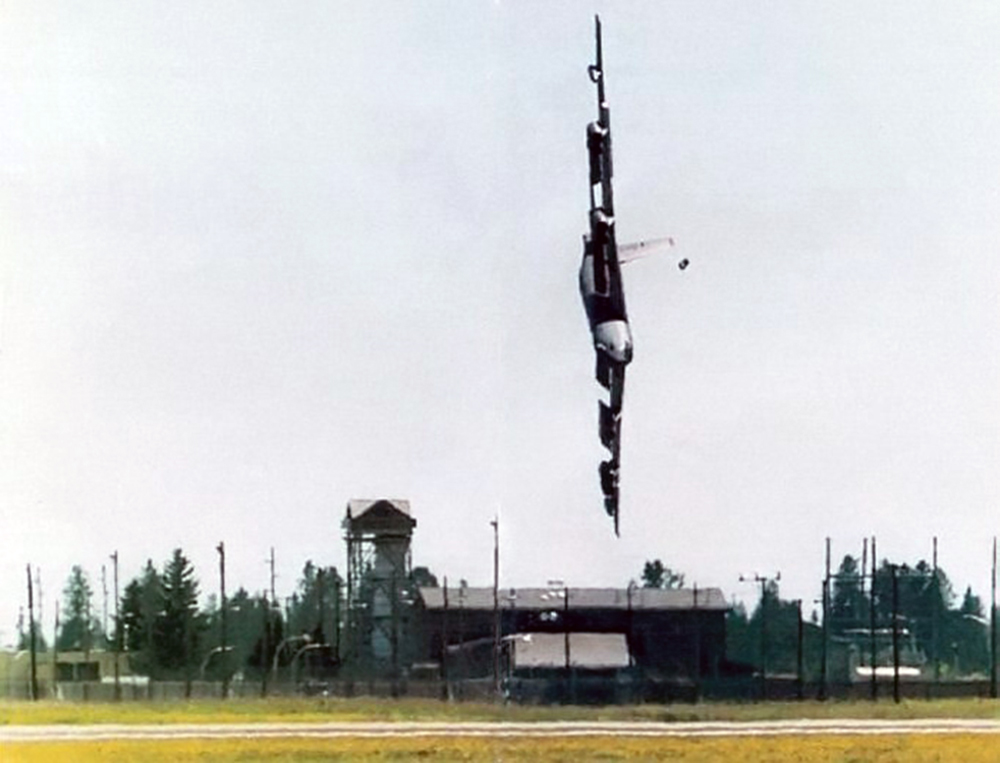
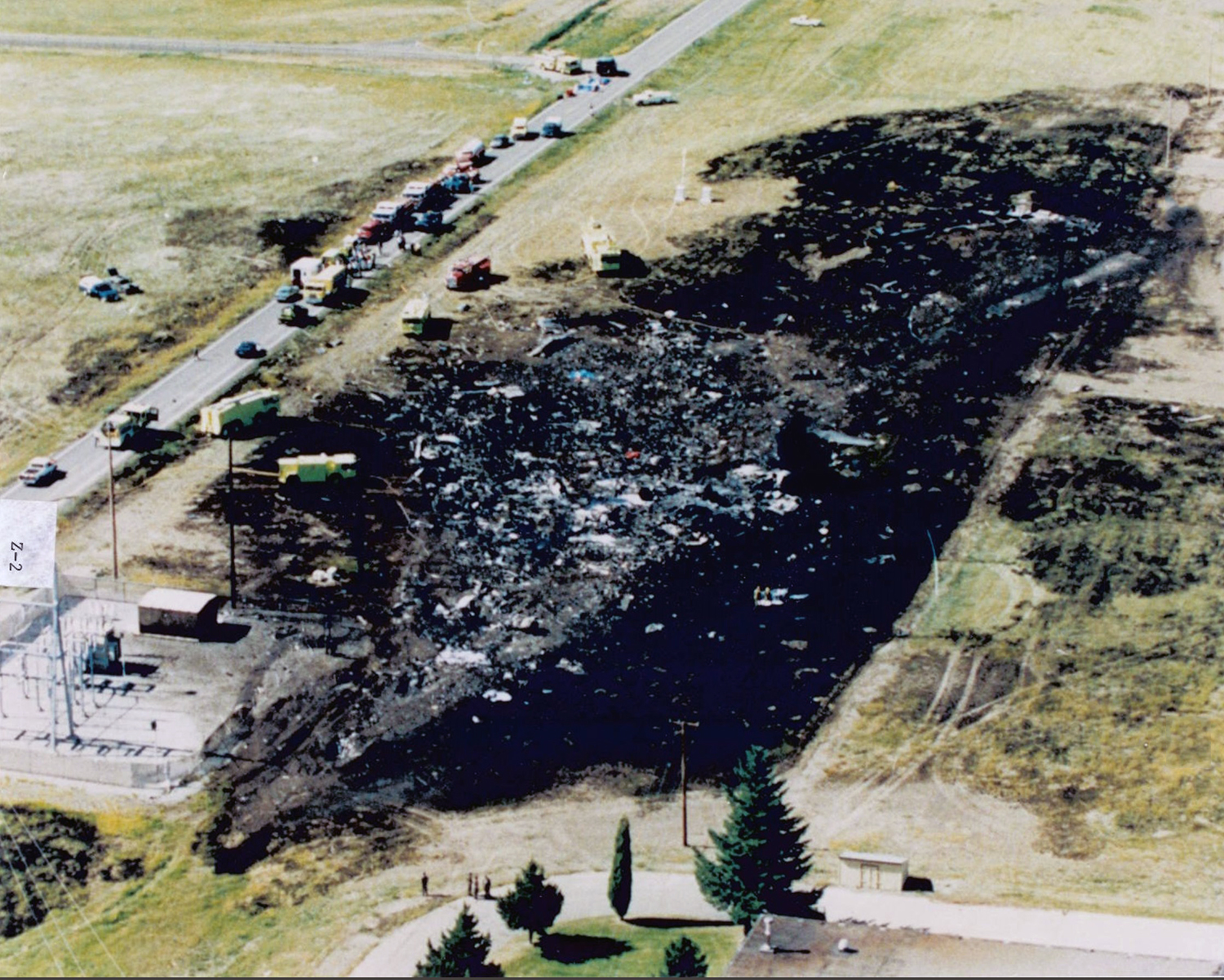
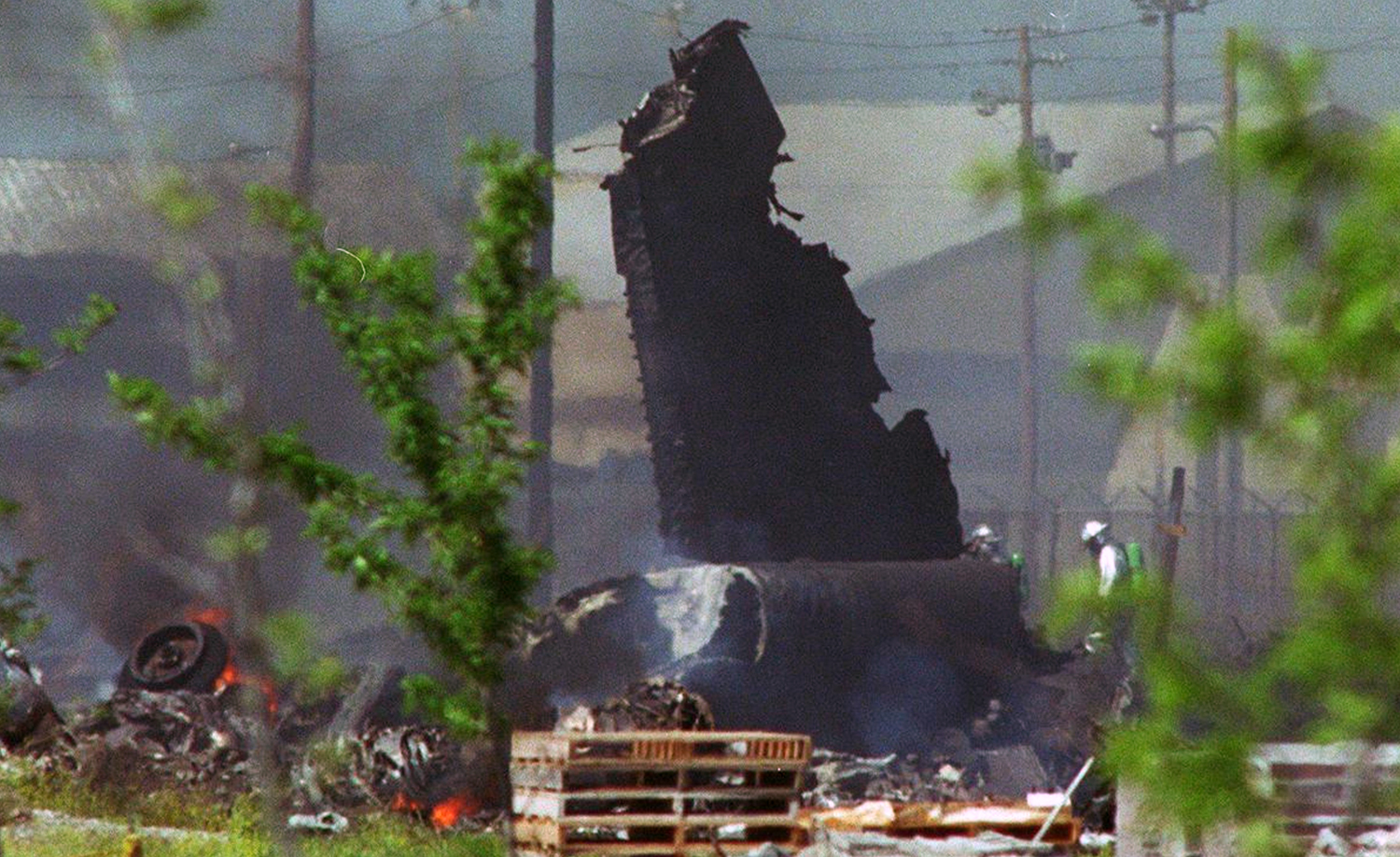
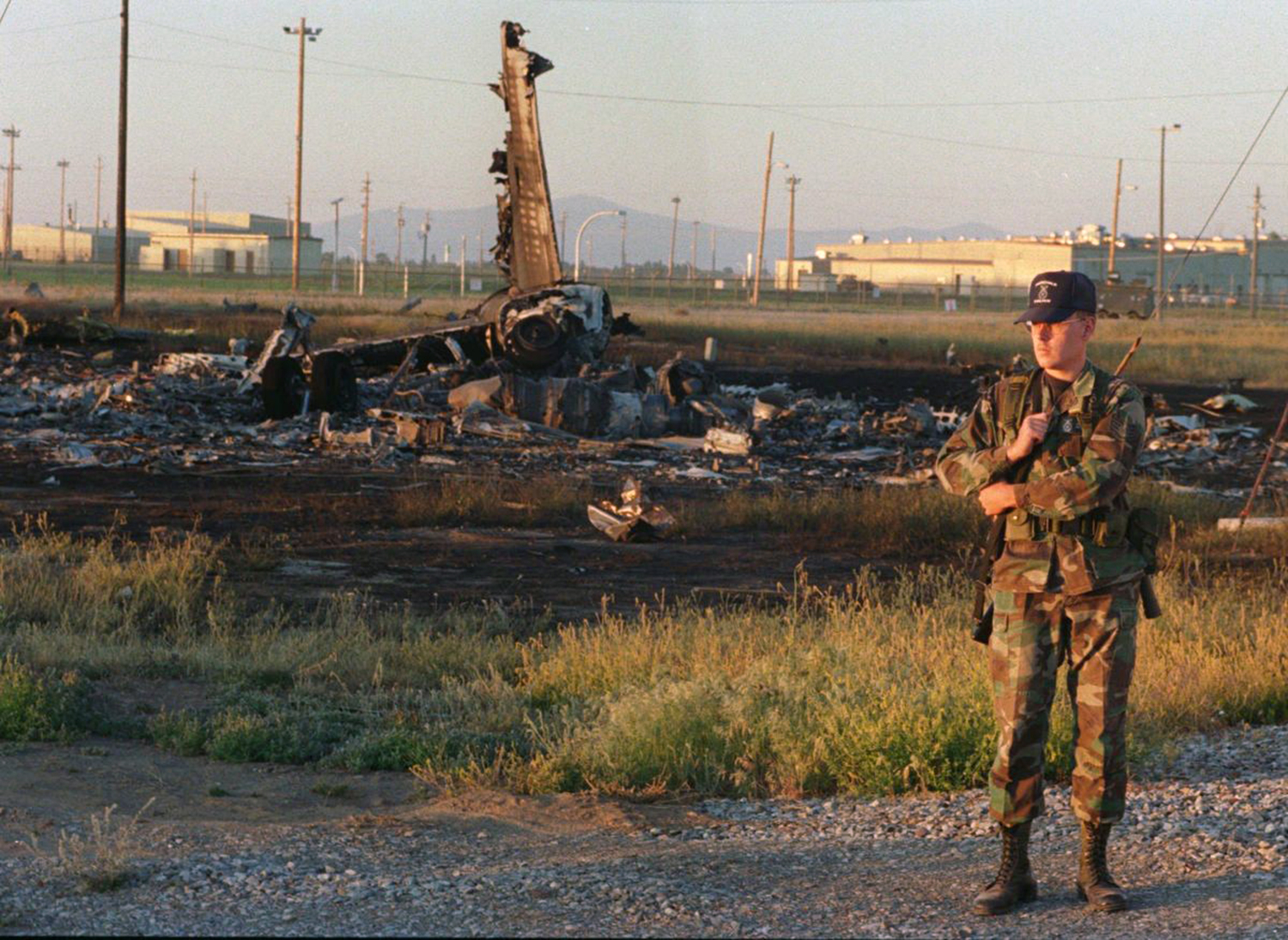
Crash of a Boeing B-52G-130-BW Stratofortress off Diego Garcia AFB: 3 killed
Date & Time:
Feb 3, 1991
Registration:
59-2593
Survivors:
Yes
Schedule:
Diego Garcia - Diego Garcia
MSN:
464356
YOM:
1959
Crew on board:
6
Crew fatalities:
Pax on board:
0
Pax fatalities:
Other fatalities:
Total fatalities:
3
Circumstances:
The aircraft was engaged in the operation 'Desert Storm' when the crew encountered electrical and engine problems in flight. Three crew members were able to bail out while three others were killed as they ejected too late.
Crew:
Cpt Kevin Kent, pilot,
Cpt Jeffrey Love, copilot,
Sgt Steven Ellard, gunner,
Cpt Jon Jeffrey Olson, radar navigator, †
1st Lt Jorge I. Arteaga, navigator, †
1st Lt Eric D. Hedeen, EWO. †
Crew:
Cpt Kevin Kent, pilot,
Cpt Jeffrey Love, copilot,
Sgt Steven Ellard, gunner,
Cpt Jon Jeffrey Olson, radar navigator, †
1st Lt Jorge I. Arteaga, navigator, †
1st Lt Eric D. Hedeen, EWO. †
Probable cause:
The problems started with an electrical malfunction on preflight with a main tank fuel gauge. The decision to take the aircraft with the initial fuel gauge problem was compounded by failures in crew coordination, crew management, and failure to follow procedures when further malfunctions occurred, and a cascade of errors compounding initial minor errors in judgment and procedures. The aircraft crashed because multiple engines ceased operating as a result of fuel starvation with over 30,000 lbs of fuel still on board the aircraft.
Crash of a Boeing B-52H-150-BW Stratofortress at Kenneth Ingalls Sawyer AFB
Date & Time:
Dec 6, 1988 at 0110 LT
Registration:
60-0040
Survivors:
Yes
Schedule:
Kenneth Ingalls Sawyer AFB - Kenneth Ingalls Sawyer AFB
MSN:
464405
YOM:
1960
Crew on board:
8
Crew fatalities:
Pax on board:
0
Pax fatalities:
Other fatalities:
Total fatalities:
0
Circumstances:
The aircraft was dispatched at Kenneth Ingalls Sawyer AFB for a local training mission, carrying seven pilot under training and one instructor. Following several touch-and-go maneuvers, the crew attempted to takeoff when an explosion occurred in the rear of the aircraft, causing the tail section to detach. Out of control, the aircraft crash landed on the runway, slid for about 3,000 feet and came to rest, broken in several pieces. All eight crew members were rescued.
Probable cause:
It was determined that a fuel pump overheated, causing an explosion in the aft fuel tank.

Crash of a Boeing B-52G-105-BW Stratofortress at Castle AFB
Date & Time:
Feb 11, 1988
Registration:
58-0219
Survivors:
Yes
Schedule:
Castle - Castle
MSN:
464287
YOM:
1958
Crew on board:
0
Crew fatalities:
Pax on board:
0
Pax fatalities:
Other fatalities:
Total fatalities:
0
Circumstances:
The crew was engaged in a training flight out of Castle AFB. During the takeoff roll, the decision to abort was taken for unknown reasons. Unable to stop within the remaining distance, the aircraft overran and came to rest. All crew members escaped uninjured while the aircraft was damaged beyond repair.
Crash of a Boeing B-52G-80-BW Stratofortress in Hunts Mesa: 2 killed
Date & Time:
Oct 16, 1984 at 2100 LT
Registration:
57-6479
Survivors:
Yes
Schedule:
Fairchild - Fairchild
MSN:
464184
YOM:
1957
Crew on board:
7
Crew fatalities:
Pax on board:
0
Pax fatalities:
Other fatalities:
Total fatalities:
2
Circumstances:
The crew departed Fairchild AFB, WA, on a training mission. While cruising by night, the crew encountered an unexpected situation (unknown technical problems) and decided to abandon the aircraft that crashed in a canyon located in Hunts Mesa, about 13 miles northeast of Kayenta, AZ. Two crew members were killed while five others were rescued. The aircraft disintegrated on impact.
Crew:
Cpt Robert L. Keeney, pilot,
Lt Douglas J. Schwartz, copilot,
Lt Kenneth O. Portis, navigator,
Maj Eugene J. Daspit, radio navigator,
Cpt Sean M. Yeronick, EWO,
Col William L. Ivy, observer, †
Sgt David W. Felix, air gunner. †
Crew:
Cpt Robert L. Keeney, pilot,
Lt Douglas J. Schwartz, copilot,
Lt Kenneth O. Portis, navigator,
Maj Eugene J. Daspit, radio navigator,
Cpt Sean M. Yeronick, EWO,
Col William L. Ivy, observer, †
Sgt David W. Felix, air gunner. †
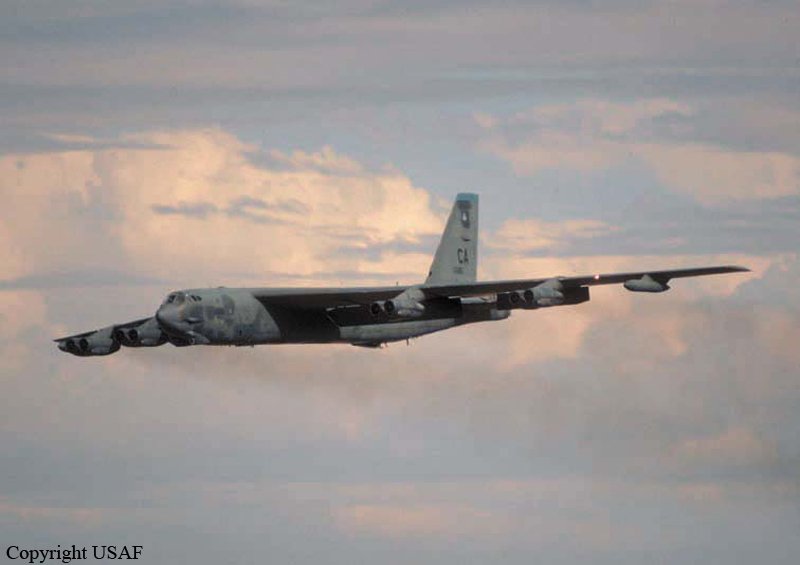
Crash of a Boeing B-52G-95-BW Stratofortress near St George: 7 killed
Date & Time:
Apr 11, 1983
Registration:
58-0161
Survivors:
No
MSN:
464229
YOM:
1958
Flight number:
Lure 75
Crew on board:
7
Crew fatalities:
Pax on board:
0
Pax fatalities:
Other fatalities:
Total fatalities:
7
Circumstances:
The airplane departed Robins AFB on an exercise (Red Flag mission) bound for California. En route, it deviated from the prescribed flight path several times and was assisted and reoriented by an AWACS crew. While cruising over Utah in poor visibility, the crew failed to realize his altitude was insufficient when the airplane struck the slope of a mountain located 20 miles north of St George. The aircraft disintegrated on impact and all seven crew members were killed.
Crew:
Cpt Donald W. Hiebert, pilot,
1st Lt Thomas C. Lennep Jr., copilot,
Cpt Jonathan M. Bishop, radio navigator,
1st Lt Matthew W. Cervenak, navigator,
1st Lt Bernard S. Russell, EWO,
Col Caroll D. Gunther, pilot observer,
S/Sgt Major Carter, air gunner.
Crew:
Cpt Donald W. Hiebert, pilot,
1st Lt Thomas C. Lennep Jr., copilot,
Cpt Jonathan M. Bishop, radio navigator,
1st Lt Matthew W. Cervenak, navigator,
1st Lt Bernard S. Russell, EWO,
Col Caroll D. Gunther, pilot observer,
S/Sgt Major Carter, air gunner.
Probable cause:
Navigation error on part of the crew.

